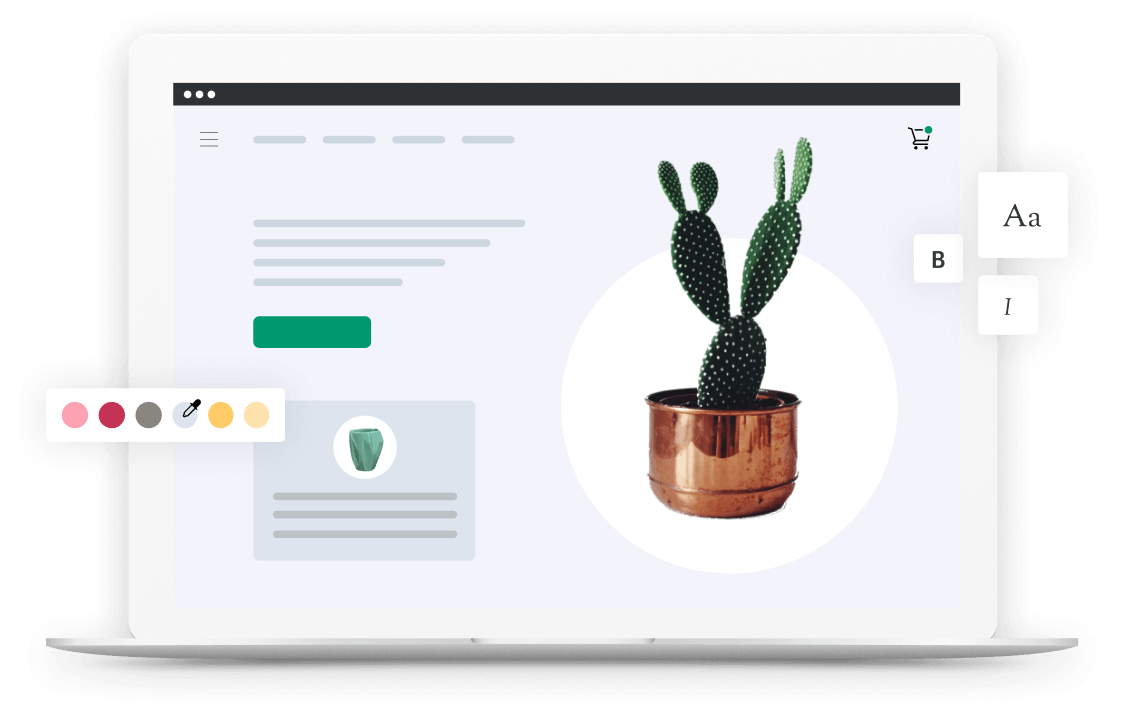Shopify vs Prestashop
Shopify vs Prestashop 2025 - Which Online Store Builder is Right for You?
Shopify offers a user-friendly store builder, hosting, SSL certificate, and 24/7 support upon signing up.
You agree to receive Shopify marketing emails.

Why Choose Shopify vs. PrestaShop
| Key features | Prestashop | Shopify |
|---|---|---|
| Hosting included | Prestashop | Shopify |
| SSL certificate included | Prestashop | Shopify |
| Free subdomain | Prestashop | Shopify |
| PCI-DSS compliant | Prestashop | Shopify |
| Multiple languages supported | Prestashop | Shopify |
| Open source | Prestashop | Shopify |
| Customizable website | Prestashop | Shopify |
| App store available | Prestashop | Shopify |
| Mobile app for store owners | Prestashop | Shopify |
| Customizable reports | Prestashop | Shopify |
| Built-in blog CMS | Prestashop | Shopify |
| Unlimited products | Prestashop | Shopify |
| Website themes | Prestashop | Shopify |
| Multiple currencies | Prestashop | Shopify |
| POS system | Prestashop | Shopify |
| International payment processors | Prestashop | Shopify |
| Native email app | Prestashop | Shopify |
| Built-in fraud protection | Prestashop | Shopify |
| 24/7 customer support | Prestashop | Shopify24/7 in English |
Start selling with Shopify today
Try Shopify for free, and explore all the tools and services you need to start, run, and grow your business.

10 Things Shopify Can Do vs Prestashop
Easy store creation
Shopify’s drag-and-drop website builder makes it easy to build an online store—no coding or programming experience required. Create a beautiful store with a choice of over 70 responsive themes, and customize it without hiring help.
Out of the box security
When comparing Shopify vs PrestaShop in terms of security, Shopify offers an out-of-the-box solution. When you sign up for Shopify, you get a free SSL certificate, automatic updates, and 24/7 monitoring. On PrestaShop, you’ll need to buy a separate SSL certificate and check for software updates manually.
Free subdomain and domain generator
Shopify provides a free subdomain on .myshopify.com. It also offers a free domain name generator to help you find the right domain name for your business. With PrestaShop, you don’t get a subdomain so you’ll need to buy a domain from a third-party domain registrar.
Built-in payment processor
Eligible businesses can use Shopify’s built-in payment processor, Shopify Payments, to accept payments. You can also third-party processors like PayPal, but Shopify Payments allows you to avoid the additional fees associated with third-party processors. With PrestaShop, you can accept payments only through a third-party processor, so you’ll need to pay a commission on top of gateway fees.
Simple email app
Creating your store on Shopify allows you to access Shopify Email. Shopify Email is an email app that allows you to build, run, and track email marketing campaigns directly from your Shopify admin. In PrestaShop, you need to configure code if you want to send emails natively from the platform.
Free access to sales channels
One of the advantages of Shopify is that it allows you to access other sales channels at no additional cost. You can sell on Instagram, Facebook, Messenger, and popular online marketplaces by connecting each channel to your store. PrestaShop also lets you access sales channels, but you need to integrate them through a paid add-on.
Fast loading site
Shopify offers a fast-loading website. PrestaShop doesn’t have control over your site speed, as you need to host your website with a third-party. Therefore, your site speed is dependent on the hosting provider’s server performance and other external factors.
One platform
Selling from a retail store and a website? Use Shopify POS to unify in-store and online sales and keep products, customers, and payments synced. On PrestaShop, you have to look for a point-of-sale module with omnichannel data unification capabilities, which may come at a cost.
Dedicated customer support
Shopify support is available 24/7, no matter which plan you’re on. You’ll also have access to help docs, webinars, blog posts, and online courses to guide you along the way. In contrast, PrestaShop invites you to chat with the PrestaShop community if its self-support resources don’t resolve your query. Shopify doesn’t require you to sign up for a support plan to get technical assistance, as PrestaShop does.
Customizable sales reports
On the advanced plan, Shopify offers sales reports that allow you to see information about your customers’ orders. You can access them based on criteria such as sales over time, by channel, or by product. Shopify lets you edit and filter these reports to show the specific data you need. On PrestaShop, you can only view the customer list and overall total sales by default. Filtering and customizing reports require PrestaShop merchants to invest in a paid module.
Why Businesses Prefer Shopify vs. PrestaShop
Great solution for SMBs
Shopify is a great ecommerce solution for small businesses to easily build a store and get their products available for sale online. Shopify provides hundreds of template options which allow businesses to customize their look and feel to suit their brand so they can start selling faster, without the need to hire out a web designer.
More suitable for product launches
Millions of merchants rely on Shopify to keep their online store running during important product launches. With reliable uptime and hosting, Shopify has the ability to handle high traffic volume, uptime, and more. PrestaShop doesn’t have direct control over hosting, so store owners need to do their due diligence to find a reliable service.
Affordable apps
The Shopify App Store contains over 6 000 apps, free and paid, to integrate with your business. The paid apps are much more affordable than those PrestaShop offers. For example, the pricing of PrestaShop SEO modules starts at 49.99 €, while Shopify offers plenty of SEO apps that cost significantly less.
Integrated blog
All Shopify stores come with a built-in blog that allows you to publish content on your website. Blogging is a great way to build a community and get more exposure and sales for your business. On PrestaShop, you need to install a module in order to start blogging.
Strong security
Shopify includes a free SSL certificate that helps protect customer data from hackers. Shopify also comes with a built-in fraud protection that notifies businesses about suspicious orders.
Modern themes
Shopify offers a variety of website themes, including nine free ones. Although PrestaShop has more themes available, Shopify's selection is purpose-built for ecommerce. Shopify themes are also easier to customize, so you can modify them to reflect your online brand without needing to know how to code.
Active community
The Shopify ecosystem is dedicated to helping businesses succeed on Shopify, and it includes a community forum, a marketplace to hire experts, and more. Although PrestaShop has a community, users express frustration about the lack of support.
Mobile app
Shopify offers a mobile app that lets you manage your store from your Android or iPhone. With PrestaShop, you need to use a third-party app to access your store on your phone. Third-party apps contain ads and may also carry the risk of sharing your data with tracking companies.
We’ve been able to build something in 3 years that a lot of brands haven’t actually gotten to in 10 years.
Learn More About Shopify

Compare Shopify
See how Shopify compares to other platforms

Shopify Community
Learn from business owners on the Shopify forums

Shopify Help Center
Find answers to all your Shopify questions fast
Start selling with Shopify today
Try Shopify for free, and explore all the tools and services you need to start, run, and grow your business.
FAQs
What is the difference between Shopify and PrestaShop?
Shopify is a fully hosted platform that manages everything from performance to security to the maintenance of your online store. All of these services are included in your subscription fee. On the other hand, PrestaShop is a self-hosted solution, meaning that you have to configure it manually—and it's heavily reliant on modules to offer many of the features needed to run a business.
PrestaShop vs. Shopify: which one is easier?
For those without technical expertise, Shopify is easier than PrestaShop. Shopify was built specifically to empower anyone, anywhere to start a business, while PrestaShop is geared towards the tech-savvy. Hence, those looking for a hassle-free way to build an online store might consider Shopify while those looking to edit and adjust code might choose PrestaShop.
Which is cheaper: Shopify or PrestaShop?
While PrestaShop is free to install, you still need to cover the costs associated with running your online store, such as an SSL certificate, hosting provider, and any additional functionality needed for your ecommerce site. Shopify’s pricing starts at 228/month when paying yearly, and it includes most of the features needed to run an online store.
How to migrate from PrestaShop to Shopify?
You can migrate PrestaShop data to Shopify using the Store Importer app. The Store Importer app is a migration tool that lets you move crucial business information like customers and products into Shopify quickly. The tool follows a three-step process. First, it exports a copy of your existing store’s data. Next, it imports the copy into the new Shopify store. Finally, it reviews and edits transferred data before you launch.
Page last updated: April 12, 2021
What’s the best commerce platform for you?
Learn why thousands of businesses migrate to Shopify every year.
